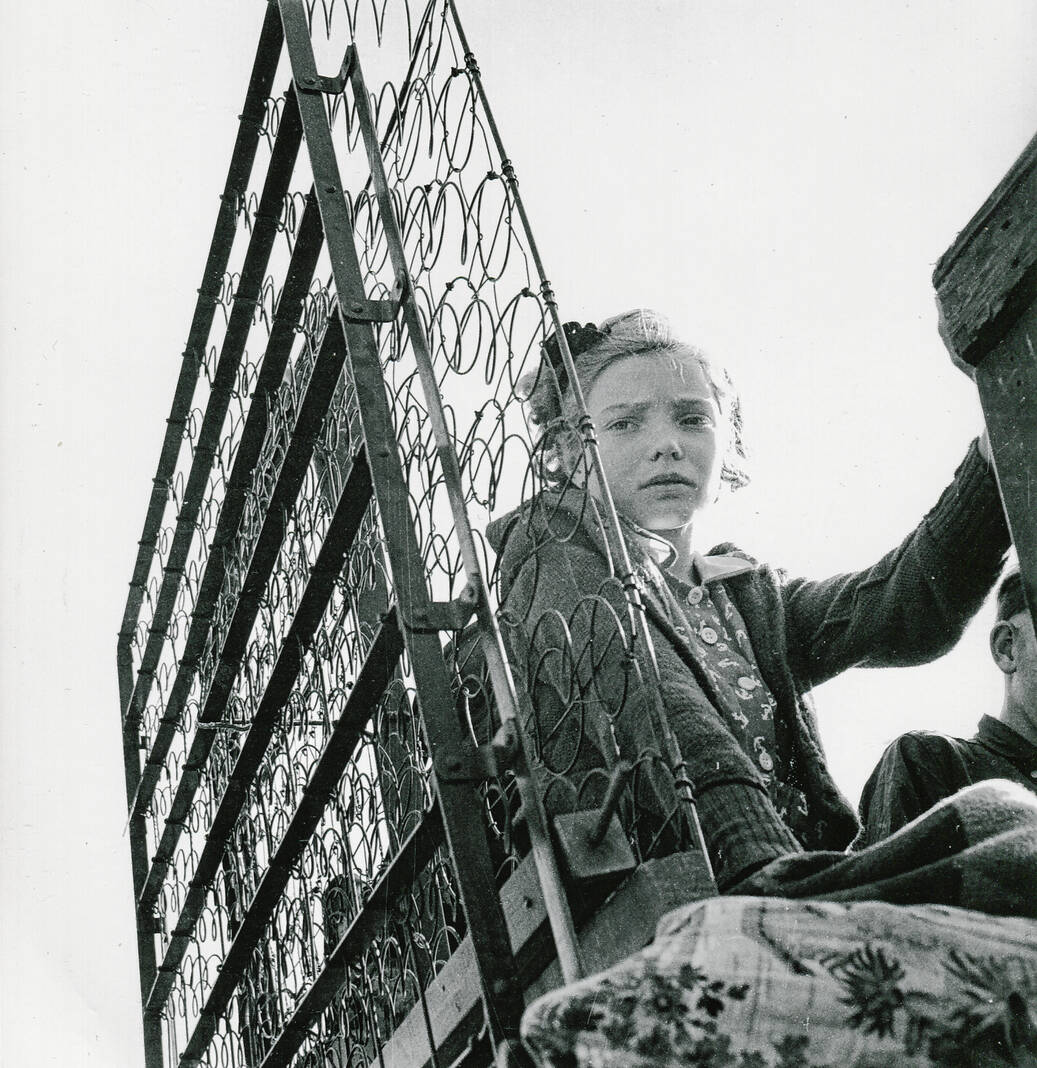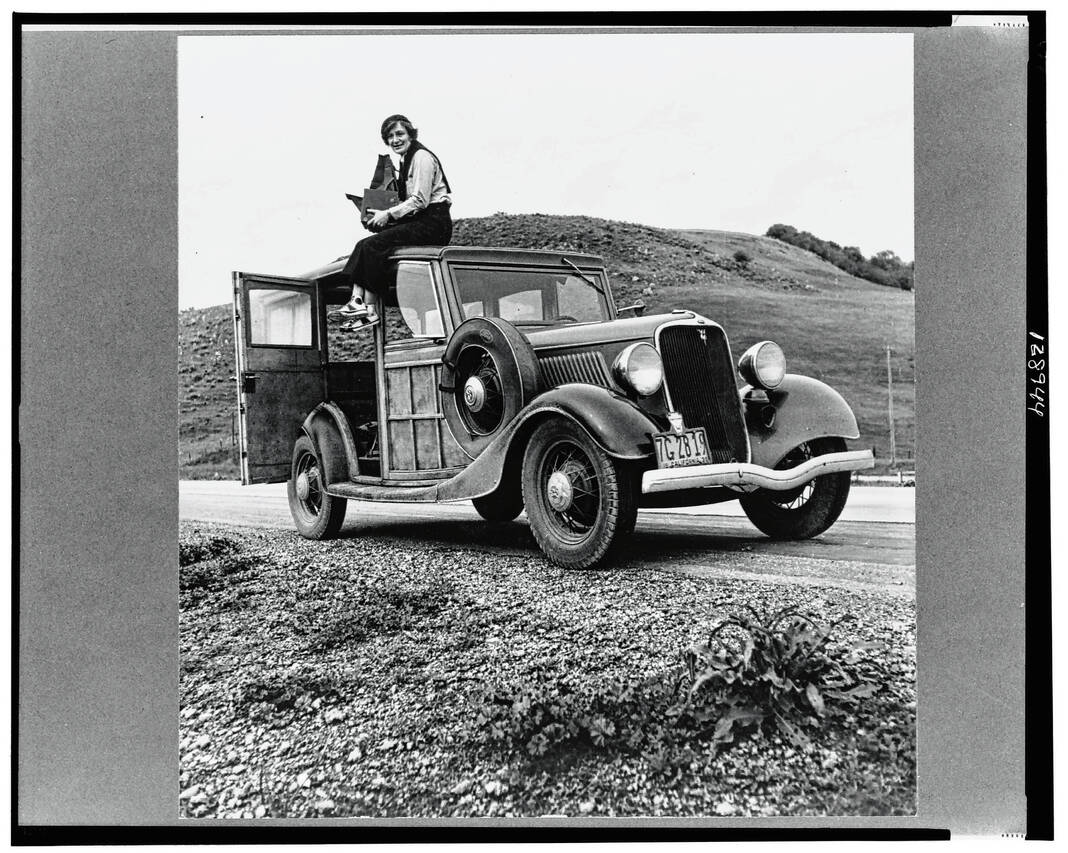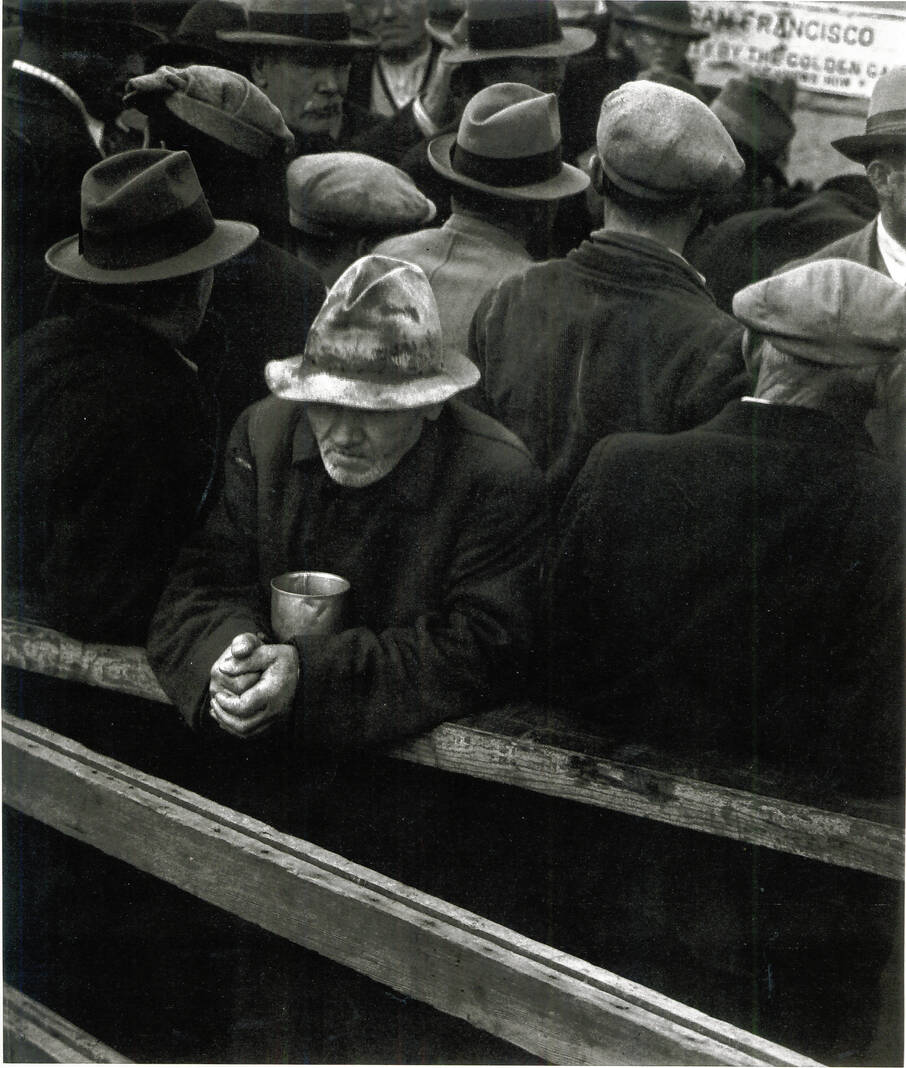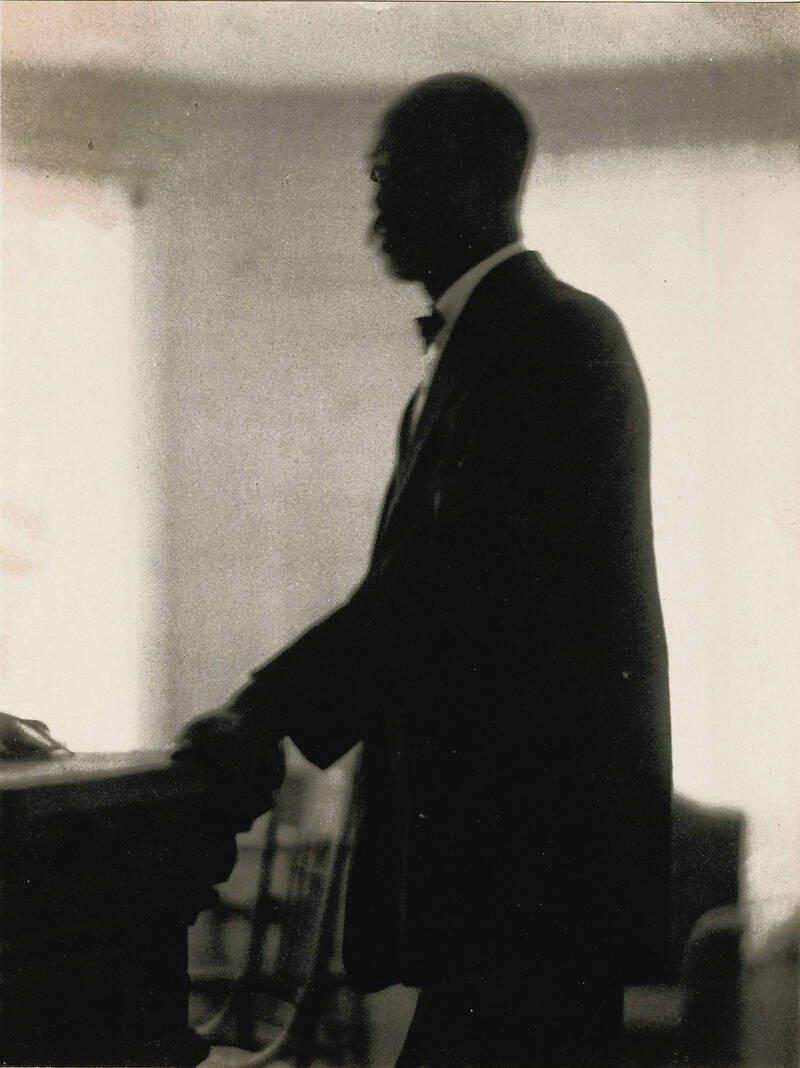
"Migrant Mother, Nipomo, California" by Dorothea Lange is one of the most iconic images capturing the Great Depression. Lange's work is the focus of a new exhibition at the Eiteljorg Museum in Indianapolis, "Changing Views: The Photography of Dorothea Lange"
SUBMITTED PHOTO FROM ART2ART CIRCULATING EXHIBITIONS
Hardship and despair poured from the photograph.
A woman, her face burdened and beset by worry, stares off into the distance. On either side of her, children bury their faces into her shoulder.
Dorothea Lange’s photo, “Migrant Mother” captures the weariness and pain of the Great Depression. The work may be the most famous image of one of the difficult chapters in American history.
Lange’s photographs captured the plight of people across the country reeling from the economic turmoil. Her work opened people’s eyes to the depths of struggle and helped preserve the memory of such a difficult time for posterity.
“She has such an iconic photo in ‘Migrant Mother,’ that is recognizable almost worldwide. We wanted to go beyond that one amazing photo,” said Jessica Nelson, director of religion and culture initiatives for the Eiteljorg Museum. “But I think it’s really exciting to be able to understand that in the greater context of Dorothea Lang’s work, to be able to explore her photography not only before the Great Depression and afterward, with her perspective of social change.”
Local audiences have a chance to see those great works in a new exhibition at the Eiteljorg Museum. “Changing Views: The Photography of Dorothea Lange” features 30 oversized prints of Lange’s original works, exploring her motivations as well as those of other documentary photographers of the 1930s.
To bookend those images, the exhibition also spotlights four contemporary photographers whose images carry on the spirit of Lange’s work.
“This exhibition of Dorothea Lange’s images could be one of the most moving and poignant photography shows Eiteljorg guests ever have experienced. Many people today had parents, grandparents or great-grandparents who lived through the Great Depression and war years, and they may have heard family stories of privations endured and the courage shown during that time,” said John Vanausdall, Eiteljorg Museum president and CEO. “Visitors to ‘Changing Views’ will see a direct line from Dorothea Lange in the 1930s to contemporary photographers today whose images expose injustice, confront racism and call for social change.”
All works are from the collection of Michael Mattis and Judith Hochberg. This exhibition was organized by art2art Circulating Exhibitions, who worked with the Eiteljorg to meet its needs in spotlighting an important female photographer.
“We’d featured the work of Ansel Adams in a previous exhibit, and we were really excited to feature a female photographer. It resonates with the rest of our mission to focus on diverse stories of the American West,” Nelson said. “But I also think Dorothea Lange is a really fascinating artist to be able to explore in-depth in a single focused exhibition like this.”
Lange defied convention throughout her life. Born in 1895, she was a survivor of polio, though the disease left her with limited mobility in one leg. What could have been a setback instead helped her further her artwork as she traveled around the country.
“She had a really unique life perspective that she brought to her photography,” Nelson said. “She was essentially disabled after a childhood bout with polio, but she said that was the thing that forced her to move more slowly, and she had to adapt to this style of engaging with people more.”
Living in San Francisco, Lange owned and operated a portrait photography studio, competing in a field dominated by men. As the Great Depression gripped the nation, she started photographing the people suffering because of it. Her work garnered much attention.
She was hired by the U.S. Resettlement Administration (later known as the Farm Security Administration), a New Deal agency where she was asked to photograph people’s struggles with poverty.
“She saw the stories that people had,” Nelson said.
Through this work, Lange captured her most well-known image: “Migrant Mother.” She was driving by a migrant worker camp in 1936 in California, where she learned the pea crop the migrants were supposed to pick had frozen, leaving the workers all in peril.
She spotted a woman with her hungry children, and took her photo. Though not an immediate sensation, the photograph would become known around the world.
“That photograph will be front and center in the exhibit — people will see it, and I’m happy for them to be able to see it up close,” Nelson said.
But “Migrant Mother” is just one of the many striking images featured in “Changing Views.” In “White Angel Breadline, San Francisco,” a man clasps his hands will his head bowed down, facing the opposite direction of the other weary people waiting for food.
“Girl with mattress springs, California” shows a young woman riding on a back of a vehicle, her family’s possessions, including mattress springs, piled high around her.
Lange’s talent for arresting images extended beyond the Great Depression, though. “Pledge of Allegiance, Raphael Weill Elementary School, San Francisco, April 20, 1942,” shows a young girl with her hand over her heart, taken while Lange was documenting the forced removal of Japanese Americans on the West Coast during World War II.
“She documented strength and resilience in the face of difficulties, whether that’s in Japanese internment camps or struggles with rural poverty and environmental change,” Nelson said. “I think to be able to see that wider span of her career is very exciting.”
“Changing Views” also incorporates other photographers who worked in the 1930s alongside Lange documenting people and places, such as Walker Evans, Ben Shahn, Wright Morris, Mike Disfarmer and others.
To bring their work into modern times, interviews and photographs from four contemporary photographers also are featured in the exhibition. The works of Josué Rivas, Nīa MacKnight, Mary Inhea Kang and Indianapolis photographer Wildstyle Paschall will show how photography continues to be a tool for social justice movements today.
“Lange’s work was more provocative than we realize nowadays. So we wanted to be sure that connected carried through for people,” Nelson said.
“Changing Views: The Photographs of Dorothea Lange” runs through Aug. 6 at the Eiteljorg.
IF YOU GO
“Changing Views: The Photography of Dorothea Lange”
What: A traveling exhibition exploring the captivating and influential view of America through the lens of legendary documentary photographer, Dorothea Lange, in addition to other of documentary photographers of the time as well as contemporary works.
When: Through Aug. 6
Where: Eiteljorg Museum, 500 W. Washington St., Indianapolis
Hours: 10 a.m.-5 p.m. Monday through Saturday, noon-5 p.m. Sunday.
Admission: $18 adults, $14 seniors, $10 university students with ID and youth ages 5-17. Kids 4 and under free.
Information and special events: eiteljorg.org/exhibitions/changing-views-the-photography-of-dorothea-lange












